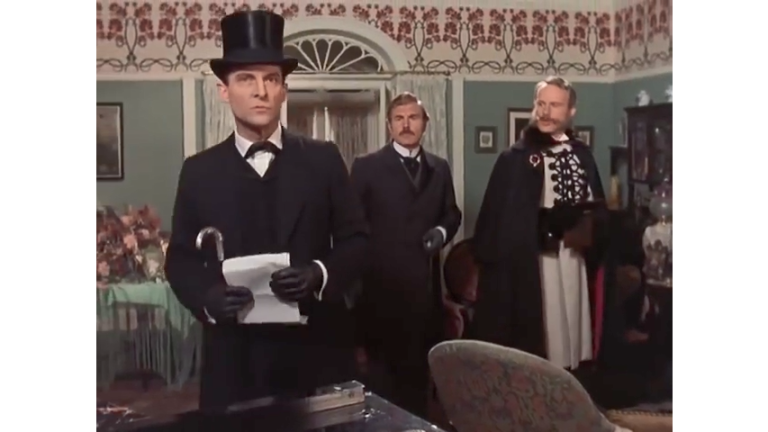3 Steps Toward Better Media Pitches
Give reporters what they need— and get out of your own way.
Who loves pitching stories to the media?
I don’t see a lot of raised hands out there.
Let’s face it: Pitching is stressful. It’s just plain hard to generate media coverage unless it’s for incredibly good news or extremely bad news — and most of the time, you’re pitching something in between. Yet quite often, your leaders have high expectations for coverage; after all, they find stories about their organization to be fascinating.
Meanwhile, the audience of reporters and producers at desirable media outlets is shrinking fast, meaning less chance you’ll find someone who even gives you the time of day. (More on that below.)
It’s a problem.
Earlier this month, several dozen communicators joined me for a group therapy session, er, workshop on media pitching at the National Press Club in Washington, D.C., part of the Ragan Communications PR Daily Media Relations Conference. We vented. We griped. We laughed. And then we discussed how to make pitching less stressful and more effective.
We capped off the session with our version of Shark Tank, which we ultra-cleverly call Pitch Tank. Brave participants pitched stories to our panel of veteran D.C. journalists Fawn Johnson, News Director of Bloomberg Industry Group, and Ingalisa Schrobsdorff, an editor with radio station WAMU-FM and DCist. They gave us the kind of valuable feedback you only get from journalists who’ve produced thousands of stories and hear dozens of pitches a week.
Their most frequent first comment was telling: “What’s the story?” The fact is, too many pitches consist of an invitation to write about the organization, its products and services, or an interesting person who works there. Too often, there’s no real story – one that media outlets’ audiences might find fascinating.
My advice for better pitching starts there.
1. Give reporters what they need. As stressful as pitching can be, journalism is no walk in the park. Most reporters and producers are responsible for finding and producing several stories a week and judged on the number of clicks those stories receive online (even for print and broadcast outlets). As traditional newsrooms have shrunk considerably in recent years, reporters are spread thin – often covering multiple beats. Many are fairly new to the job, inexperienced in the details and nuances of the industry they’re covering. They’re overwhelmed and need help.
That’s where we come in. Reporters need true, timely stories, preferably involving human beings struggling (emotion) to reach a goal (tension). They need it in a form they can use, based on their outlet (print, voice, video, online). They need facts, context and background to make sure they understand the story and its implications – and if it demonstrates an important trend, or refutes conventional wisdom, so much the better.
What they don’t need is an attempt to charm or persuade them to do a story that won’t work for their outlet or audience. In other words, they don’t want to be sold.
Simply (and briefly) present a good story, making it clear you can provide relevant facts, background and sources – and visuals that they can capture for their audience – and they might bite.
But first…
2. Get out of your own way. We see it all the time: pitches that are doomed from the start because they contain elements sure to turn off any reporter, editor or producer who reads them. Here are a few:
- Ignorance about the reporter’s beat. If you’re pitching a lighthearted feature to hard-news reporters, you’re wasting your time and theirs. Understand each journalist’s beat and interests and whether they’ve covered stories like yours before.
- Fake cheeriness. Reporters get a lot of pitches. Don’t need to kick yours off with small talk, like you would with a friend or neighbor. Get straight to the story.
- Discussion of your process. Journalists care about the story, not how you assembled the media target list.
- Jargon. You might be trying to sound impressive, but no one wants to decipher word salads of business jargon, technical terms or inside-baseball analysis. Describe the story in a conversational tone, keeping it succinct.
- It’s all about you. Lead with the story, not the organization. To be blunt, reporters don’t care that you met goals, set priorities, won an award or launched a product. They care about what their audience will find interesting. Lead with that.
- Bad quotes. Press releases that accompany pitches too often include boring, business-blather quotes that no human being would actually say out loud. That’s hardly an advertisement for a reporter to interview the person ostensibly being quoted. Effective quotes express an emotion or a point of view.
And for best results…
3. Pitch the story, not the story pitch. Tailored pitches can be effective if they avoid mistakes and focus on real stories with an emotional center. But with fewer journalists out there, spread thinner over many beats, telling your own stories is increasingly the best route. That’s the clear lesson we’ve learned from nearly 15 years of brand journalism work with organizations of all kinds around the country.
What is brand journalism? Simply put, it’s being your own publisher – going direct to your audiences with compelling storytelling. Like good journalists, you focus on what audiences find interesting, and use enticing headlines, effective writing and strong visuals to tell them your organization’s important stories.
The result? Your pitching to the news media can become more effective. Your organization becomes a go-to source for great stories, not only about what you’re doing but about your industry. Instead of begging journalists to cover you, they’re coming to you for what they need: true, timely stories, well-told.
So before you pitch a reporter, act like a reporter. Dig up not only the basic information but the context, visuals, colorful details and compelling quotes that you’ll need to assemble a good story. Showing all these valuable elements to a reporter is far more effective than a pitch that tells the reporter some of these elements exist.
Nick Lanyi rolls up his sleeves when he’s pitching. He’s a Washington, D.C.-based consultant for Ragan Consulting Group, specializing in media training for executives, crisis communications and media pitching.
Contact our client team to learn more about how we can help you with your communications. Follow RCG on LinkedIn and subscribe to our weekly newsletter here.







